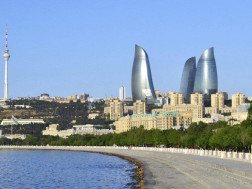Israel’s gross domestic product (GDP) grew at an annual rate of 1.9% in the third quarter of this year, according to a revised estimate published by the Central Bureau of Statistics. This is a lower growth figure than in the first estimate released a month ago, of 2.1%. The revised figure is in line with earlier forecasts.
The revised growth figure may be lower than the first estimate, but it is still reasonable by international comparison. More worrying is the GDP per capita figure, in which Israel is generally less well placed. The original estimate was that GDP per capita fell by an annualized 0.2% in July-September; the revised figure is a decline of 0.4%.
Private consumption per capita fell by an annualized 4.4% in the third quarter, after an annualized 6.9% rise in the second quarter. Even if the Israeli public has started to tighten its belt, as the economy slows and interest rates rise, it still has to pay more for essentials that have risen in price. Thus consumption per capita on housing, fuel, electricity and similar items rose 2.6%.
On less essential items, such as clothing and entertainment, consumer spending fell substantially in the quarter, by 8.5% on an annualized basis, while spending on consumer durables fell by a dramatic 28.6% in annual terms. The Central Bureau of Statistics explains that vehicle imports are an important component of this figure. While vehicle prices have risen, Israelis are buying fewer of them because of a severe shortage of stocks at the importers.
The revised third quarter growth figure puts Israel in the middle of the figures for the OECD countries. Israel’s GDP grew by 0.5% (non-annualized) in the quarter, slightly more than the OECD average of 0.4%, and on a par with Italy and Lithuania. Norway had the highest growth, at 1.5%, while in the US, GDP grew by 0.7%. Germany recorded 0.4% growth, and France 0.2%. GDP in the UK and the Czech Republic shrank by 0.2% in the third quarter, Globes reports.
















